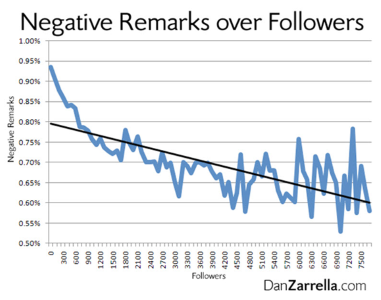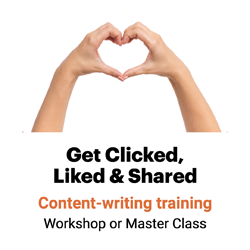Use the Awwwww Factor to make blog posts go viral
Have you seen the piece about the orphan baby kangaroo and wombat who become BFFs? They also have a baby wallaby friend. Because of course they do.

Awwwww.
It’s obvious why these bundles of joey are making the rounds on Facebook. But how can you use the same approaches to make your content marketing messages travel the world, while others just languish on the couch?
Write a blog post that’s positive and emotional, suggest Jonah Berger and Katherine L. Milkman, two professors at the University of Pennsylvania.
Make messages positive, emotional.
Together, Berger and Milkman reviewed some 7,000 articles that appeared in The New York Times to determine what distinguished pieces that made the most-mailed list.
After controlling for placement, timing, author popularity and gender, and story length and complexity, they found that two features determined an article’s success:
- How positive its message was. Positive messages are more viral than negative ones.
- How much emotion it incites. The more extreme the emotion, the more likely it is to move people to act. Messages that make people angry, for instance, are more likely to be shared than those that make people sad.
Articles that evoked emotion — “Baby Polar Bear’s Feeder Dies” — got shared much more on social media than those that did not, such as “Teams Prepare for the Courtship of LeBron James.”
And happy emotions (“Wide-Eyed New Arrivals Falling in Love with the City”) outperformed sad ones (“Maimed on 9/11, Trying to Be Whole Again.”)
Spread the word
What characteristics make online messages go viral?

Characteristics that go viral
Increase your chances of going viral by increasing these characteristics of your blog post:
Anger
This emotion is 34% more likely to go viral. That’s equivalent to spending an additional 2.9 hours as the lead story on NYTimes.com. And that’s nearly four times the average number of hours articles spend in that position.
Sample headline:
What Red Ink? Wall Street Paid Hefty Bonuses
That makes anger the No. 1 technique for getting your target audience to read your blog posts and pass them on. Show how your organization solves the problems that make readers angry with these techniques:
- Don’t be afraid of fear appeals.
- Make ’em sick, make ’em well.
Awe
This emotion is 30% more likely to go viral:
Rare Treatment Is Reported to Cure AIDS Patient
The Promise and Power of RNA
That makes awe the No. 2 emotion we can tap to make messages go viral (after only anger) is awe. Call it The Awwwww Factor.
So how can you make your messages as awe-inspiring as little orphan animal stories?
- Write about animals. Do you have a Ben the Bear story in your organization?
- Write about people. Try human-interest stories.
- Tell stories. Storytelling is the most effective way to add positive emotion to your content.
Practical value
This emotion is 30% more likely to go viral:
Voter Resources
It Comes in Beige or Black, but You Make It Green
Write how-to stories, tipsheets and news readers can use to live their lives better.
Interest
This emotion is 25% more likely to go viral:
Love, Sex and the Changing Landscape of Infidelity
Anxiety
This emotion is 21% more likely to go viral:
For Stocks, Worst Single-Day Drop in Two Decades
Emotionality
This characteristic is 18% more likely to go viral:
Redefining Depression as Mere Sadness
When All Else Fails, Blaming the Patient Often Comes Next
Surprise
This characteristic is 14% more likely to go viral:
Passion for Food Adjusts to Fit Passion for Running
Pecking, but No Order, on Streets of East Harlem
Positivity
This characteristic is 13% more likely to go viral:
Wide-Eyed New Arrivals Falling in Love with the City
Tony Award for Philanthropy
HubSpot viral marketing scientist Dan Zarrella found similar results from his research.

Zarrella used TweetPsych to analyze more than 100,000 accounts. He found that negative remarks — references to sadness and aggression, negative emotions and feelings, and morbid comments — correlate with fewer followers. (What a shock!)
“As it turns out, nobody likes to follow a Debbie Downer,” Zarrella writes. “Accounts with lots of followers don’t tend to make many negative remarks. If you want more followers, cheer up!”
Sadness
This characteristic is 16% less likely to go viral:
Web Rumors Tied to Korean Actress’s Suicide
Germany: Baby Polar Bear’s Feeder Dies
Maimed on 9/11, Trying to Be Whole Again
___
Source: Jonah Berger and Katherine l. Milkman, “What Makes Online Content Viral?” (PDF) Journal of Marketing Research, April 2012, pp. 192-205

Leave a Reply